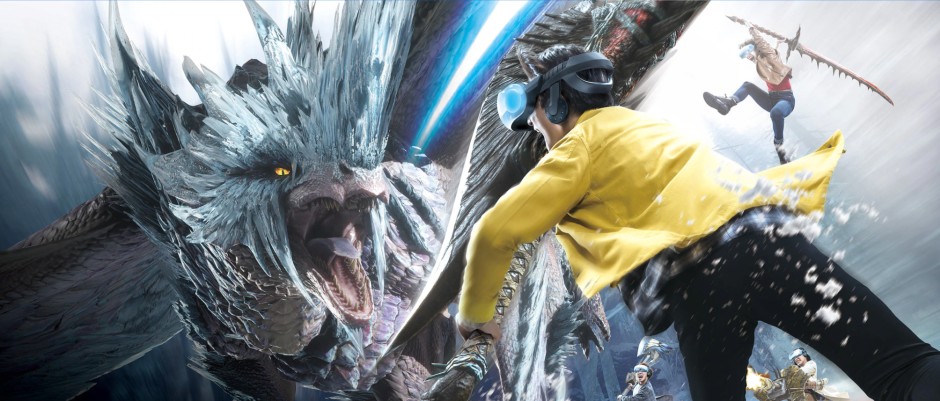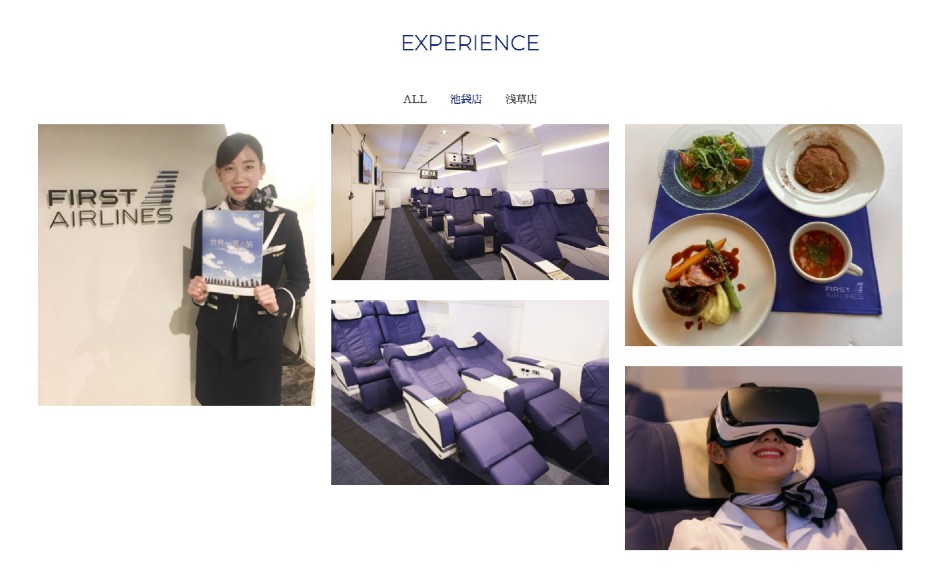VR, also known as “virtual reality,” is a technology that allows you to experience the feeling of being immersed in a digital world.
VR is being used in various fields, starting with the entertainment field, and is attracting attention due to the influence of movement restrictions due to Corona.
Let’s deepen our understanding of VR, which is expected to be widely used in business in the future.
What is VR (virtual reality)?
VR is called “virtual reality” and is sometimes translated as “artificial reality”. Briefly explain what VR is.
★What is
VR ・VR is an abbreviation of “Virtual Reality” and is translated as “virtual reality”
・By wearing a VR device, it is possible to experience as if you were in a virtual space
・In a variety of industries, not just the entertainment field beginning to be utilized
Meaning of VR
VR stands for “Virtual Reality” and is commonly translated as “virtual reality” in Japanese.
By wearing a VR device such as VR goggles, it is possible to experience as if you were immersed in a 360-degree digital virtual space . This digital virtual space and a series of technologies that create virtual space are called “VR”.
In general, in addition to three-dimensional spatiality, there are elements of interaction with real time (the space changes in real time in response to actions) and self-projection (the ability to enter the space yourself). We define things as VR.
What you can do with VR
With VR, you can enter a digital space that could only be experienced in two dimensions until now. VR goggles make it possible. By wearing a wearable device for VR, you can immerse yourself in a 3D space that spreads 360 degrees.
In recent years, in order to gain a deeper sense of immersion in VR, in addition to visual and auditory sensations, there are also productions that stimulate vestibular sensations (a sense of balance against gravity and tilt) and somatosensory sensations (such as temperature and pain sensations). It is increasing.
VR is notably used in the entertainment field, but it is also being actively introduced in fields such as tourism and medicine.
History of VR
In fact, the history of VR is surprisingly old, and the 1935 American science fiction novel ” Pygmalion’s Spectacles” describes the technology behind VR goggles, which is said to be the forerunner of VR.
Research on VR began in the 1960s, and the word and concept of VR gradually permeated the world in the 1990s. Game consoles with VR elements were actually developed in the 1990s, but due to technical deficiencies such as poor image quality, they did not become popular.
Since then, graphics technology has evolved dramatically, and in 2016, various home VR game machines such as “PlayStation VR” were sold. For this reason, 2016 is sometimes called the “first year of VR” .
How VR works
So how does VR create a sense of immersion in 3D space? Briefly explain how VR works.
The reason why images can be viewed stereoscopically
Why do images appear three-dimensional in VR? It is related to “binocular parallax”.
“Binocular parallax” is the difference between the left eye and the right eye when seeing with each eye . The left eye and the right eye usually see different images, just like when you close one eye at a time, things appear to shift. The brain compensates for this discrepancy, allowing us to see things three-dimensionally.
In VR, in order to intentionally cause this binocular parallax, different images are shown in the right and left eyes of the VR goggles. By synthesizing these two different types of images in the brain, it is possible to capture the image in three dimensions.
Why the image moves according to the direction of the face
The VR goggles have a built-in sensor that detects the orientation of the face.
Images in the VR space are shot and created in a wider range than the human field of view, such as 180 degrees and 360 degrees. Since the human field of view is about 120 degrees, it is not possible to see the entire VR image at once.
When the person wearing the VR goggles moves their face, the sensor detects the direction of the face and changes the range of the projected image according to the direction. Therefore, it feels like the image moves according to the viewpoint, like a three-dimensional space .
Differences between VR and AR
Some of you may have heard the term “AR” in relation to VR. They are similar but different words. What exactly is AR and how is it different from VR?
What is AR (augmented reality)?
AR stands for “Augmented Reality” and is called “augmented reality”. AR is a technology that uses devices such as smartphones and AR goggles to display navigation, 3D data, videos, etc. in the real world .
AR that can be utilized by smartphones has already been introduced to various services. An example of using AR is “Google Translate,” which translates and displays a foreign language with a smartphone camera.
Differences between VR and AR
There are the following differences between VR and AR. Comparing how they are used, we can see that they are completely different.
- Immersion in virtual space (VR) and augmentation of the real world (AR)
- Wearable device required
VR allows you to experience immersing yourself in a 3D virtual space, while AR projects digital images onto the real world. If VR creates a virtual space with a sense of reality, AR is based on the real world.
Also, AR can be used with a smartphone and does not require a dedicated wearable device such as VR goggles. AR tends to have more opportunities to be used on a daily basis than VR because it is easy to use and augments the real world.
Equipment necessary to experience VR
As mentioned above, you need special goggles to experience VR. In addition, controllers such as smartphones and game consoles are indispensable for using VR. Introducing the equipment necessary for VR.
VR goggles (headset, mount display)
VR goggles are indispensable equipment for projecting a three-dimensional space, and are sometimes called VR headsets or head-mounted displays (HMDs). All types project images so as to cover the eyes.
There are three main types of VR goggles:
- VR goggles (standalone type)
- VR goggles for PC
- VR goggles for smartphones
The stand-alone type has a display and computer inside the VR goggles, so you can experience VR without connecting to other devices. In recent years, stand-alone VR goggles developed for medical use have also appeared.
PC VR goggles are goggles that are used by connecting to a computer. The higher the specs of your PC, the more high-performance and high-resolution VR you can enjoy.
VR goggles for smartphones use smartphones, and cheap ones made of cardboard are also on sale. Although the performance is not that high, it is easy to use, and there are examples of using it for virtual previews of real estate.
smartphones, game consoles
When movement in VR is important, such as games, you need a smartphone or game controller to control movement.
Since VR is a virtual space, it is not possible to move around in a real three-dimensional space when moving within the space. As such, it needs to be connected to a smartphone or game controller to control movement within VR.
On the other hand, if the purpose is only to view images using VR, a controller is not required.
VR use cases by industry
VR is used in various industries, and the fields of application are expanding year by year. Here are some examples of VR.
entertainment

Entertainment is at the forefront of VR . Consumer game consoles such as ” PlayStation VR ” are attracting attention, and it has been introduced as one of the attractions at Universal Studios Japan (USJ), a theme park in Osaka.
Visitors can experience the world of the popular game ” Monster Hunter ” by wearing VR goggles . The realism of hunting monsters in snowy mountains is unique to VR. It is attracting attention as a limited-time attraction from January to August 2022.
sports
VR is used not only for watching sports with a more realistic feeling, but also for training .
In 2016, the Tohoku Rakuten Eagles, a professional baseball team in Sendai, announced the introduction of the world’s first VR training system. When VR is turned on, the space seen from the bat is projected. You can experience the opponent’s pitcher’s pitching based on a huge amount of data, and you can prepare for the actual turn at bat.
Since it is compatible with data collection and processing, it is possible to constantly update the latest information on opponent pitchers collected during the season.
sightseeing

With the spread of COVID-19 making physical travel difficult, the demand for virtual travel has never been higher.
FIRST AIRLINES provides a VR service that allows you to experience airplanes and overseas travel from Ikebukuro. Enjoy the service of the cabin attendants and in-flight meals in a space that imitates an airplane. After that, you can enjoy a virtual trip while observing the streets of overseas cities such as Paris and New York with VR goggles and communicating with local people.
It has become a hot topic as a new form of travel.
medical care
In the medical field, VR is often used for training purposes.
At Stanford University, VR “The Stanford Virtual Heart” is used to learn about heart functions and diseases in children. The Stanford Virtual Heart is a three-dimensional heart that allows trainees to see how it works, open it to see inside, and see how blood circulates.
Since the movement of the heart can be confirmed three-dimensionally with virtual images, it is evaluated that a higher learning effect can be obtained than learning with 2D images.
advertisement
Scandinavian Airlines has released a 360-degree movie on YouTube to convey the charm of Northern Europe. You can freely look up, down, left and right without VR goggles, but with VR goggles you can enjoy the images in three dimensions.
Wild animals such as moose are hiding, and if you look up at the sky, you can see the aurora. You can’t move freely in the space, but you can say that panoramic images like this are one of the ways to use VR.
You can see that the sense of reality provided by VR is also compatible with advertising promotions .
Summary | How to utilize 3D images and spaces is the key to the future
This time, I introduced VR. The history of VR is surprisingly long, and the fields in which it is used are expanding.
Now that physical movement has become difficult due to the influence of the corona, VR’s feature of “providing an immersive virtual space experience” is attracting a lot of attention. By thinking about how to use 3D images and spaces, you will be able to find effective ways to use VR.


